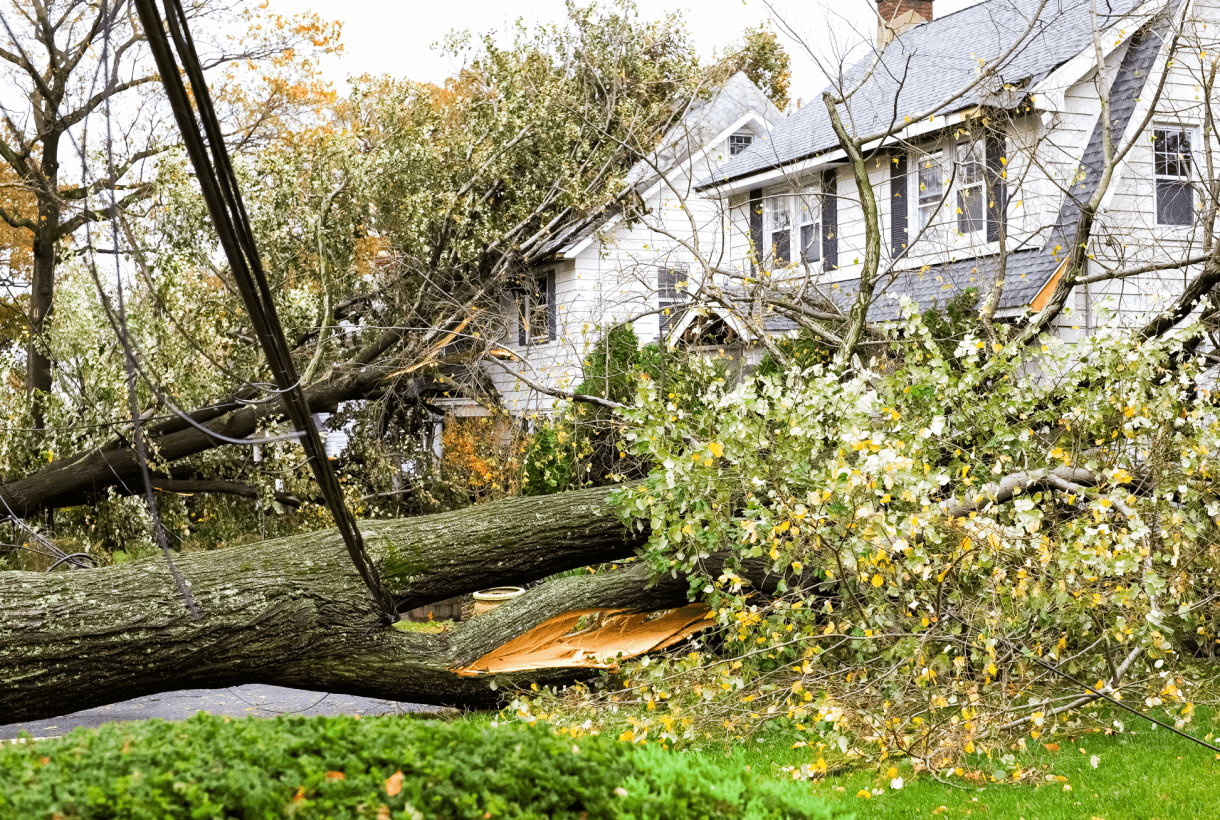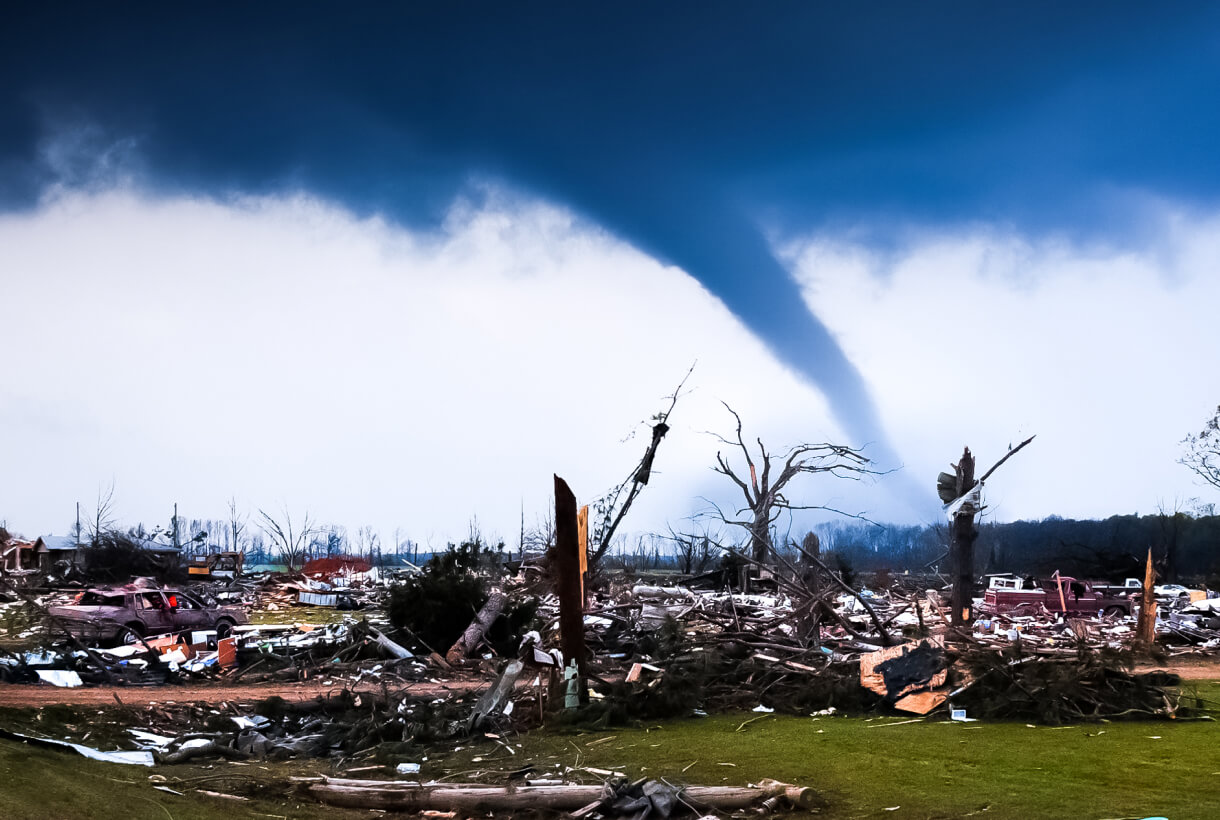Severe weather events continue to dominate the news cycle, both for their severity and unpredictability. Take tornadoes, for example: During the month of April 2024, the U.S. experienced at least 300 tornadoes, the second-highest month on record. And the locations of tornado reports are also raising eyebrows. On April 19, a tornado occurred near Anchorage; while it was technically a land spout, it’s a rare occurrence, with only a few others documented in Alaska since 1950.
While meteorologists can make predictions about tornado patterns for the remainder of 2024 (2023 saw a migration east to Dixie Alley), only time will tell. What we do know is weather events like tornadoes threaten every organization’s ability to keep their people safe and secure. This is due to the fundamental nature of weather as a dynamic risk – and one of the main reasons why risk management technology is so important.
A Tale of Dynamic Risk
A dynamic risk is one in which the ultimate harm is different than the initially expected harm. In these scenarios, leaders most often find themselves saying, “I was expecting Risk A, but then we got hit by Risk B.” What does this look like? One organizational leader recently gave a noteworthy example.
On a Friday morning, management noticed a number of workers had not shown up, which resulted in a major staffing shortage. Shortly thereafter, they found out a tornado had struck the night before, in a neighborhood where a majority of staff resided. Because the weather had stabilized and crews were already remediating damage and getting utilities back online, the organization assumed their staffing shortage would be quickly resolved. Unfortunately, in the days following, power outages and gas leaks necessitated another round of evacuations, displacing workers well into the following week.
The takeaway is that one weather event can trigger other issues you may not have anticipated. Don’t underestimate the impact of secondary and tertiary threats on your organization, and ensure you have a plan in place to mitigate risk and effectively communicate with your employees—and the technology to support it.
Keeping Employees Safe and Informed
Our mobile world is steadily increasing the overlap between work and life, which raises the stakes on duty of care. Where previously its main focus was travel for work and international operations, it now incorporates the growing number of employees who work from home, as well as those who have returned to the office and those following the hybrid model.
Physical threats such as severe weather can strike at any time and any location, and organizations should be proactive about mitigating risks to their people and operations. In fact, their employees expect it.
The 2024 OnSolve by Crisis24 Employee Safety Survey found that the large majority (93 percent) of full-time employees feel their employer is responsible for their safety during working hours. These numbers remain high when looking at different categories of workers. Ninety percent of in-office workers and 89 percent of hybrid employees feel their employer is responsible for their safety when they're on-site or in-office during working hours. Fifty-eight percent of fully remote employees and 63 percent of lone workers feel the same way.
2024 Employee Safety Survey
Discover employee perceptions and expectations when it comes to communication and safety in the workplace. Read insights gathered from our survey of over 1,000 in-office, hybrid, fully-remote and lone workers to improve your safety initiatives and enhance employee satisfaction.
And these expectations extend beyond working hours. More than half (56 percent) of full-time workers feel there are scenarios when their employer is responsible for their safety outside of working hours. For example, 35 percent of full-time workers feel their employer is responsible for their safety at work-sponsored functions like holiday parties, happy hours, and team building events.
Risk Management Technology Makes Tornado Resilience a Reality
Technology combined with a proactive approach to managing risk can help organizations maintain business continuity and keep employees safe and informed before, during and after severe weather events like tornadoes.
- Educate your people about existing and predicted threats and how to prepare for them. This can include regular safety briefings and rehearsals specific to your office locations. All personnel should know what to do during an emergency and have ample opportunity to practice.
- Monitor the risk landscape. Critical Event Management (CEM) platforms allow for better tracking of a storm’s progress and potential impacts. AI-powered data pipelines analytics can help identify risks early, enabling quicker and more informed decision-making.
- Communicate with everyone before, during and after a critical weather event. With a mass notification system, you can send alerts promptly, in your recipients’ preferred mode (such as text, voicemail, email, desktop alerting and in-app notification). Delivery notifications, read-receipts and send-failure reports let you know who has and hasn’t received your updates. Two-way communications capabilities enable your employees to request assistance or report themselves safe.
The bottom line is mutual – you and your workers depend on each other for economic stability. Trust and technology go hand in hand when you have the right system to keep everyone connected and strengthen organizational resilience.
Download our Tornado Preparedness Kit to learn more.



